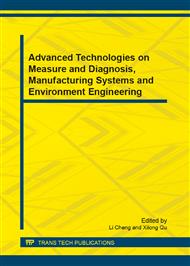p.324
p.329
p.334
p.338
p.344
p.349
p.354
p.359
p.364
Uncertainty Measure Based on Evidence Theory
Abstract:
Evidence theory is an effective method to deal with uncertainty information. And uncertainty measure is to reflect the uncertainty of an information system. Thus we want to merge evidence theory with uncertainty method in order to measure the roughness of a rough approximation space. This paper discusses the information fusion and uncertainty measure based on rough set theory. First, we propose a new method of information fusion based on the Bayse function, and define a pair of belief function and plausibility function using the fused mass function in an information system. Then we construct entropy for every decision class to measure the roughness of every decision class, and entropy for decision information system to measure the consistence of decision table.
Info:
Periodical:
Pages:
344-348
Citation:
Online since:
June 2013
Authors:
Price:
Сopyright:
© 2013 Trans Tech Publications Ltd. All Rights Reserved
Share:
Citation:


